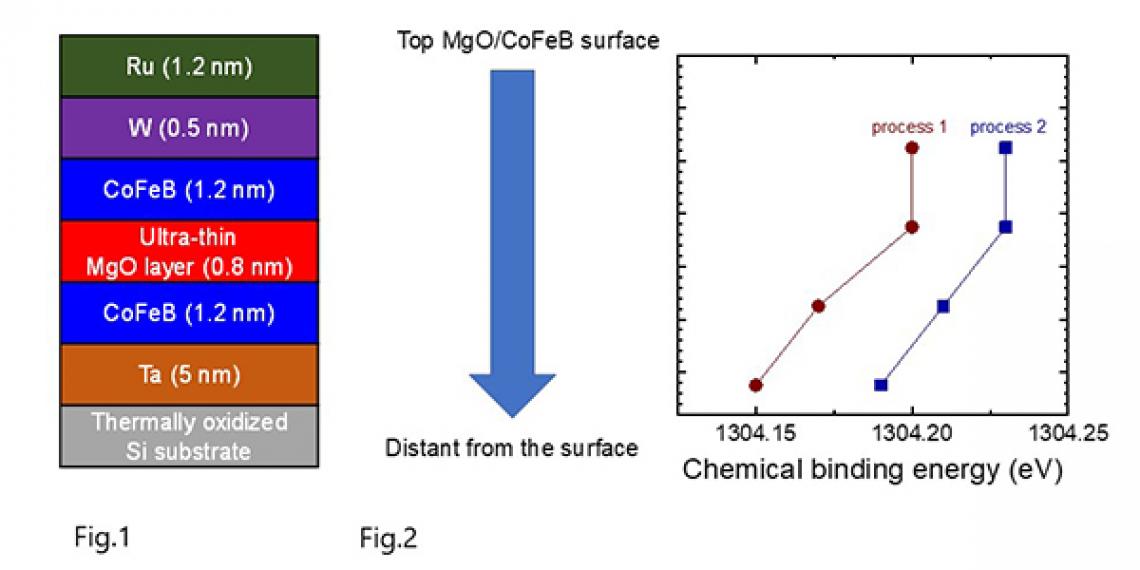Center for Innovative Integrated Electronic Systems (CIES) at Tohoku University
STT-MRAM, a non-volatile memory, has been intensively researched and developed because of its high-performance and low power consumption. STT-MRAM contains magnetic tunnel junctions (MTJ) as an integrated memory element. Ultrathin MgO film is used as a tunneling barrier for MTJ, thus being a dominant determinant in STT-MRAM performance. It is, therefore, important to understand the microscopic characteristics of MgO and in particular, the chemical bonding state.
Researchers at Tohoku University lead by Prof. Tetsuo Endoh, director of CIES and Dr. Testuya Nakamura, group leader of JASRI have successfully observed the chemical bonding state of the ultrathin MgO in entire MgO layer by means of AR-HAXPES at SPring-8, the world's largest synchrotron radiation facility.
Figure 1 shows the sample structure used in this study. Figure 2 shows the microscopic chemical bonding state of the MgO changes along the film thickness direction.
Figure 1 shows the sample structure used in this study. It is the simplest MTJ stack in which the ultra-thin MgO (0.8 nm) is sandwiched between CoFeB films. The chemical bonding state of the ultra-thin MgO in this study was evaluated according to film thickness direction.
Figure 2 shows the microscopic chemical bonding state of the MgO changes along the film thickness direction. This result shows that the microscopic bonding state of MgO, something usually considered to be homogeneous along the film thickness direction, actually changes depending on the distance from the interface.
The successful observation of the ultrathin MgO layer chemical bonding state will lead to an improvement of MgO quality. This in turn will accelerate STT-MRAM development.
Accordingly, a new synchrotron radiation facility (Slit-J) is now under construction at Aobayama New-Campus at Tohoku University in conjunction with relevant industries. The facility will allow for better understanding of lighter element microscopic features and hopefully lead to further prosperity for relevant industries.




